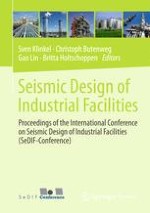Seismic Design of Industrial Facilities demands a deep knowledge on the seismic behaviour of the individual structural and non-structural components of the facility, possible interactions and last but not least the individual hazard potential of primary and secondary damages.
From 26.-27. September 2013 the International Conference on Seismic Design of Industrial Facilities firstly addresses this broad field of work and research in one specialized conference. It brings together academics, researchers and professional engineers in order to discuss the challenges of seismic design for new and existing industrial facilities and to compile innovative current research.
This volume contains 50 contributions to the SeDIF-Conference covering the following topics with respect to the specific conditions of plant design:
· International building codes and guidelines on the seismic design of industrial facilities
· Seismic design of non-structural components
· Seismic design of silos and liquid-filled tanks
- Soil-structure-interaction effects
· Seismic safety evaluation, uncertainties and reliability analysis
· Innovative seismic protection systems
· Retrofitting
The SeDIF-Conference is hosted by the Chair of Structural Statics and Dynamics of RWTH Aachen University, Germany, in cooperation with the Institute for Earthquake Engineering of the Dalian University of Technology, China.
